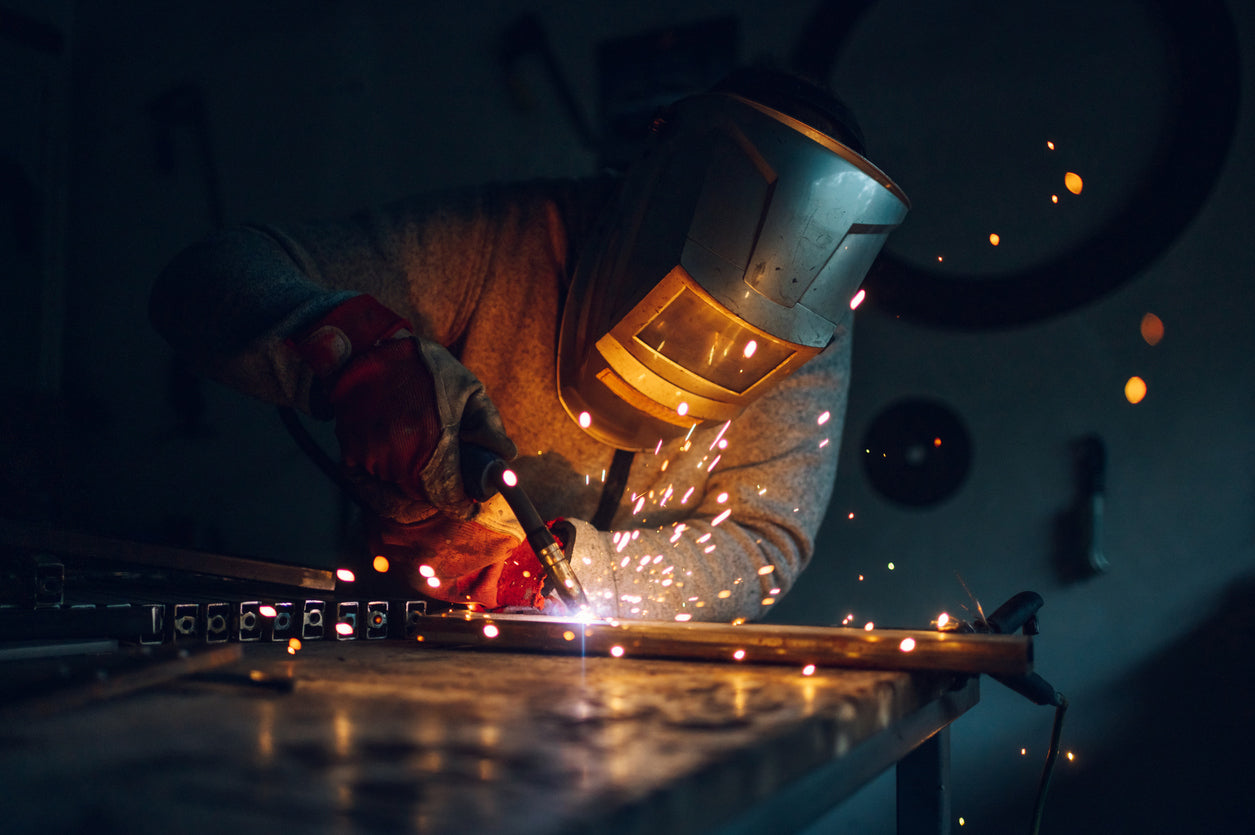Welding helmets are crucial safety gear for any welding job, and they fall into two main categories: active (auto-darkening) and passive (fixed-shade) helmets. Both types offer protection from intense light, UV rays, and sparks, but they operate in different ways and suit different needs. Here's a breakdown to help you decide which type is best for your work:
Passive Welding Helmets
Passive welding helmets have a fixed-shade lens, usually rated at shade 10. These helmets have been the standard in welding protection for many years and provide consistent shading to shield your eyes from harmful light.
How Passive Helmets Work
Passive helmets use a tinted glass lens that remains dark at all times. When the welder needs to see the workspace without the helmet’s dark tint, they simply flip the helmet up. To start welding, they flip it down again. This style is often known as a “flip-up” helmet.
Pros of Passive Helmets
- Affordable: Passive helmets are usually less expensive because they don’t have any electronic components.
- Durable and Simple: Without batteries or sensors, passive helmets are durable and require minimal maintenance.
- Consistent Protection: The fixed shade provides consistent protection, making it reliable for jobs that use the same welding process and materials.
Cons of Passive Helmets
- Interruptions for Adjustments: Flipping the helmet up and down repeatedly can disrupt work, especially in projects where frequent welding stops and starts are required.
- Requires Skill: New welders may find it challenging to start their arc accurately since they must lower the helmet immediately before welding.
Best For: Welders on a budget, and those who work in predictable conditions with the same material thickness and welding intensity.
Active Welding Helmets (Auto-Darkening)
Active, or auto-darkening welding helmets, come equipped with a lens that adjusts automatically based on light exposure. These helmets contain sensors that detect the welding arc and instantly darken the lens, usually to a pre-set shade level, depending on the model.
How Active Helmets Work
An active helmet starts with a light shade, often around shade 3 or 4, allowing the welder to see the work area clearly without flipping the helmet up. When an arc is struck, the sensors detect the brightness and darken the lens within milliseconds, protecting the welder’s eyes.
Pros of Active Helmets
- Convenience and Efficiency: No need to flip the helmet up and down repeatedly; welders can switch tasks without interruption.
- Adjustable Shade Levels: Many auto-darkening helmets allow you to adjust the shade settings for different welding types, materials, and light intensities.
- Enhanced Precision: Auto-darkening reduces the need for flipping, making it easier to position the electrode accurately.
Cons of Active Helmets
- Battery-Dependent: Most auto-darkening helmets are battery-operated and may need occasional replacements or recharging, especially during prolonged use.
- More Expensive: The technology and sensors make active helmets pricier than passive ones.
- Potential Sensor Malfunctions: If the sensors fail to detect the arc properly, there could be temporary exposure to intense light. However, high-quality helmets usually come with reliable multi-sensor systems.
Best For: Frequent, precise welding tasks or jobs requiring frequent starts and stops, and welders working on various materials and light conditions.
Comparison Chart: Passive vs. Active Welding Helmets
| Feature | Passive Helmet | Active Helmet |
|---|---|---|
| Shade | Fixed shade | Auto-darkening, adjustable |
| Vision Adjustment | Must be manually flipped | Automatically adjusts |
| Ease of Use | Simple design | Convenient for stopping and starting |
| Price | Affordable | More expensive due to technology |
| Battery Requirements | None | Battery or solar-powered |
| Skill Level | May require practice to position arc accurately | Suitable for all skill levels |
Choosing the Right Helmet for Your Needs
Your choice will depend on several factors, including:
- Budget: Passive helmets are generally more affordable and may suit beginners or infrequent welders.
- Frequency of Use: Auto-darkening helmets provide added convenience for welders who need frequent starts and stops.
- Type of Welding: If you work on varied materials or processes, an active helmet with adjustable shade settings can be beneficial.
- Comfort and Precision: For longer projects, auto-darkening helmets reduce neck strain from repeated flipping, allowing for greater accuracy.
Conclusion
Both active and passive welding helmets offer excellent protection against the intense light and UV exposure from welding. Passive helmets are simple, affordable, and reliable, but they can be limiting in high-frequency or detailed work. Active helmets, with their auto-darkening technology, provide superior convenience and adaptability but at a higher cost. By considering your budget, frequency of use, and the nature of your welding projects, you can choose a helmet that best fits your needs and keeps you safe on the job.

